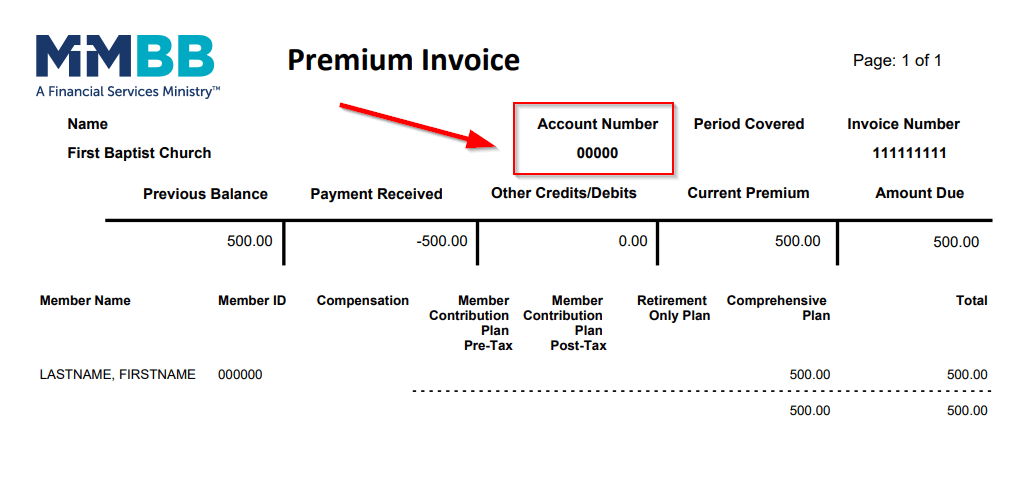The Markets (as of market close April 30, 2021)
Stocks climbed higher in April on the heels of strong first-quarter corporate earnings reports and encouraging employment data. Vaccine distributions increased and several states relaxed COVID-related restrictions. More stimulus checks were given out, which encouraged consumer spending.
The number of jobless claims decreased, while nearly 1,000,000 new jobs were added. The Federal Reserve noted that the economy was improving, but that accommodative measures would remain in place. President Biden offered a plan to infuse nearly $2 trillion of capital into the United States infrastructure, to be paid for by a slew of corporate tax increases. Each of the benchmark indexes listed here posted solid monthly gains in April, led by the Nasdaq, followed by the S&P 500, the Global Dow, the Dow, and the Russell 2000. Year to date, the Russell 2000 remains well ahead of its 2020 closing value, followed by the Global Dow, the S&P 500, the Dow, and the Nasdaq.
The market sectors ended the month higher, with communication services and consumer discretionary advancing 10.0% and 8.0%, respectively. Information technology (6.8%), financials (6.2%), and real estate (6.2%) were the other sectors enjoying a notable monthly boost. The yield on 10-year Treasuries fell 11 basis points in April. The dollar declined. Crude oil prices climbed 7.0% to close at $63.50 per barrel. Gold advanced for the second consecutive month. The national average retail price for regular gasoline was $2.872 on April 26, $0.020 higher than the March 29 selling price of $2.852, and $1.099 more than a year ago.
MARKET SUMMARY
| MARKET/INDEX |
AS OF 4/30 |
PRIOR MONTH |
2020 CLOSE |
MONTHLY CHANGE |
YTD CHANGE |
| DJIA |
33,874.85 |
32,981.55 |
30,606.48 |
2.71% |
10.68% |
| NASDAQ |
13,962.68 |
13,246.87 |
12,888.28 |
5.40% |
8.34% |
| S&P 500 |
4,181.17 |
3,972.89 |
3,756.07 |
5.24% |
11.32% |
| RUSSELL 2000 |
2,266.45 |
2,220.52 |
1,974.86 |
2.07% |
14.77% |
| GLOBAL DOW |
3,924.14 |
3,813.59 |
3,487.52 |
2.90% |
12.52% |
| FED. FUNDS |
0.00%-0.25% |
0.00%-0.25% |
0.00%-0.25% |
0 BPS |
0 BPS |
| 10-YEAR TREASURIES |
1.63% |
1.74% |
0.91% |
-11 BPS |
72 BPS |
| US DOLLAR-DXY |
91.26 |
93.23 |
89.84 |
-2.11% |
1.58% |
| CRUDE OIL-CL=F |
$63.50 |
$59.32 |
$48.52 |
7.05% |
30.87.02% |
| GOLD-GC=F |
$1,768.20 |
$1,708.40 |
$1,893.10 |
3.50% |
-6.60% |
Chart reflects price changes, not total return. Because it does not include dividends or splits, it should not be used to benchmark performance of specific investments.
Latest Economic Reports
- Employment: Employment increased by a robust 916,000 new jobs in March after adding 379,000 new jobs in February. In March, the unemployment rate fell by 0.1 percentage point to 6.0%, down considerably from its April 2020 high but is 2.5 percentage points higher than its pre-pandemic level in February 2020. The number of unemployed persons decreased by 300,000 to 9.7 million, a positive trend, but still 4.0 million higher than February 2020. Among the unemployed, the number of persons on temporary layoff decreased in March by 203,000 to 2.0 million. This measure is down considerably from the recent high of 18.0 million in April 2020 but is 1.3 million higher than in February 2020. In March, the number of persons not in the labor force who currently want a job, at 6.9 million, is unchanged over the month but is 1.8 million higher than in February 2020. The number of employed persons who teleworked in March because of the coronavirus pandemic fell to 21.0, down from 22.7% in the prior month. In March, 11.4 million persons reported that they had been unable to work because their employer closed or lost business due to the pandemic. This measure is down from 13.3 million in February. March saw notable job growth in leisure and hospitality (280,000), up 18.5% since February 2020. Nearly two-thirds of the increase in leisure and hospitality was due to a surge in food services and drinking establishments (+176,000). Both the labor force participation rate and the employment-population ratio inched up 0.1 percentage point to 61.5% and 57.8%, respectively. Average hourly earnings fell by $0.04 to $29.96 in March but are up 4.2% from a year ago. The average work week increased by 0.3 hour to 34.9 hours in March.
- Claims for unemployment insurance continued to decrease as employment recovers from the effects of the pandemic. According to the latest weekly totals, as of April 17, there were 3,660,000 workers receiving unemployment insurance benefits, down from the March 13 total of 3,870,000. The insured unemployment rate fell 0.1 percentage point to 2.6%. During the week ended April 10, Extended Benefits were available in 15 states, (16 states during the week of March 6); 51 states and territories reported 6,974,068 continued weekly claims for Pandemic Unemployment Assistance benefits (7,735,491 in March), and 51 states and territories reported 5,192,711 continued claims for Pandemic Emergency Unemployment Compensation benefits (5,551,215 in March).
- FOMC/interest rates: The Federal Open Market Committee met in April and decided to maintain the target range for the federal funds rate at its current 0.00%-0.25%. Noting that there are signs that employment and the economy are coming back from the effects of the COVID-19 pandemic, they still have not reached their pre-pandemic levels, and inflation remains below the Committee's 2.0% target. Overall, the Committee indicated that it would continue to maintain an accommodative stance. However, the FOMC would be prepared to alter its current stance if it were deemed warranted by changing economic conditions.
- GDP/budget: The economy accelerated at an annual rate of 6.4% in the first quarter of 2021 after advancing 4.3% in the fourth quarter of 2020. Consumer spending, as measured by personal consumption expenditures, increased 10.7% in the first quarter after rising 2.3% in the fourth quarter. Nonresidential (business) fixed investment climbed 9.9% following a 13.1% increase in the fourth quarter; residential fixed investment continued to advance, increasing 10.8% in the first quarter after soaring 36.6% in the prior quarter. Exports decreased 1.1% in the first quarter of 2021, after advancing 22.3% in the fourth quarter of 2020, and imports (which are a negative in the calculation of GDP) increased 5.7% in the first quarter (29.8% in the fourth quarter of 2020). Federal nondefense government expenditures climbed 44.8% following a fourth-quarter decline of 8.9% due primarily to added federal stimulus payments and aid.
- The federal budget deficit was $659.6 billion in March, following February's $310.9 billion deficit. The deficit is 454.0% higher than it was in March 2020. The deficit for the first six months of fiscal year 2021, at $1.706 trillion, is 130.0% higher than the first six months of the previous fiscal year. Government outlays rose 45.0% to $3.410 trillion, far exceeding the 6.0% increase in receipts of $1.704 trillion. Weighed against the comparable period in fiscal year 2020, the current fiscal year has seen expenditures for income security increase by 243.0%, commerce and housing credit rose by 2,430%, and outlays for health climbed 28.0%. On the other side of the ledger, individual income tax receipts increased 7.0%, corporate income tax receipts advanced 24.0%, and employment and general retirement receipts jumped 3.0%.
- Inflation/consumer spending: Inflationary pressures continued to advance in March. According to the latest Personal Income and Outlays report, consumer prices edged up 0.5% in March after advancing 0.2% in February. Prices have increased 2.3% from March 2020. Excluding food and energy, consumer prices increased 1.8% over the last 12 months. Personal income increased 21.1% in March after falling 7.0% in February, and disposable personal income climbed 23.6% in March after dropping 0.8% the previous month. The increase in personal income in March is more a reflection of stimulus payments and increasing job growth. Consumer spending rose 4.2% in March after declining 1.0% in February. Over the last 12 months, personal consumption expenditures (consumer spending) have dipped 2.7%.
- The Consumer Price Index climbed 0.6% in March following a 0.4% increase in February. The March increase was the largest 1-month rise since a 0.6% increase in August 2012. Over the 12 months ended in March, the CPI rose 2.6%. Gasoline prices continued to increase, rising 9.1% in March, accounting for over half of the overall CPI increase. Consumer prices less food and energy rose 0.3% in March. The CPI, less food and energy prices, is up 1.6% over the past 12 months ended in March. Food prices rose 0.1% in March after edging up just 0.2% in February. In February, prices for apparel fell 0.3% after falling 0.7% the prior month. Prices for new vehicles were unchanged in March, while prices for used cars and trucks climbed 0.5%.
- Prices that producers receive for goods and services continued to climb in March, increasing 1.0% after advancing 0.5% in February. Producer prices increased 4.2% for the 12 months ended in March, which is the largest yearly gain since climbing 4.5% for the 12 months ended in September 2011. Producer prices less foods, energy, and trade services rose for the eleventh consecutive month after advancing 0.6% in March. Energy prices continued to contribute to the increase in the PPI, climbing 5.9% in March following a 6.0% jump in February.
- Housing: In March, sales of existing homes fell for the second consecutive month, declining 3.7% after decreasing 6.6% in February. Nevertheless, over the past 12 months, existing home sales increased 12.3%. The median existing-home price was $329,100 in March ($313,000 in February), up 17.2% from March 2020. Unsold inventory of existing homes climbed 3.9% from February and represents a 2.1-month supply at the current sales pace. Sales of existing single-family homes decreased 4.3% in March following a 6.6% decline in February. Year over year, sales of existing single-family homes rose 10.4%. The median existing single-family home price was $334,500 in March, up from $317,100 in February.
- New single-family home sales rebounded in March after plunging in February. New home sales rose 20.7% in March after declining 18.2% in February. Sales of new single-family homes have increased 66.8% since March 2020. The median sales price of new single-family houses sold in March was $330,800 ($349,400 in February). The March average sales price was $397,800 ($416,000 in February). The inventory of new single-family homes for sale in March represents a supply of 3.6 months at the current sales pace, down from the February estimate of 4.8 months.
- Manufacturing: The manufacturing sector in March recovered from a February flop as industrial production increased 1.4% after declining 2.6% the previous month. Manufacturing output increased 2.7% in March following a 3.1% decline in February. Mining output rose 5.7% in March after falling 5.4% in February. March saw the output of utilities plunge 11.4%, as the demand for heating fell because of a swing in temperatures from an unseasonably cold February to an unseasonably warm March. Total industrial production in March was 1.0% higher than its year-earlier level, but it was 3.4% below its pre-pandemic (February 2020) level. • New orders for durable goods increased in March for the tenth time out of the last eleven months, increasing 0.5% following a 0.9% decrease in February. Motor vehicles and parts (5.5%) and communications equipment (4.3%), led the overall increase in new orders. New orders for nondefense aircraft and parts plunged 46.9% in March, after soaring 101.8% the previous month. Excluding transportation, new orders increased 1.6% in March. Excluding defense, new orders increased 0.5% in March. After advancing 2.9% in February and 8.7% in January, new orders for capital goods fell 3.5% in March, pulled lower by a 4.7% decrease in new orders for nondefense capital goods. In March, new orders for defense capital goods rose 3.8%, after falling 9.7% in February.
- Imports and exports: Both import and export prices rose higher in March for the fourth consecutive month. Import prices climbed 1.2% in March following a 1.3% jump in February. Import prices rose 6.9% over the past year, the largest 12-month advance since increasing 6.9% for the year ended January 2012. Import fuel prices rose 6.3% in March following a 11.7% increase in February. Import fuel prices rose 54.3% for the year ended in March, the largest 12-month advance for the index since a 68.9% increase in February 2017. Nonfuel import prices rose 0.8% in March following a 0.5% advance in February. Export prices increased 2.1% in March after climbing 1.6% in February. For the year ended in March, the price index for exports rose 9.1%, the largest 12-month increase since the index advanced 9.4% in September 2011. Agricultural export prices increased 2.4% in March following a 2.8% jump in February. Nonagricultural exports rose 2.0% in March after increasing 5.1% in February.
- In March, the international trade in goods deficit was $90.6 billion, up 4.0% over February's deficit. Exports increased 8.7% and imports rose 6.8%. For the 12 months ended in March, exports have risen 11.5%, while imports have jumped 20.6%.
- The latest information on international trade in goods and services, out April 7, is for February and shows that the goods and services trade deficit was $71.1 billion, 4.8% over the January deficit. February exports were $187.3 billion, or 2.6%, less than January exports. February imports were $258.3 billion, or 0.7%, lower than January imports. Year over year, the goods and services deficit increased $56.5 billion, or 68.6%, from February 2020. Exports decreased $36.2 billion, or 8.7%. Imports increased $20.3 billion, or 4.1%.
- International markets: There are certainly signs that several of the world's economies are turning the corner, particularly in the United Kingdom and Canada. However, some economic indicators in the Eurozone and China still remain well below pre-pandemic levels. Inflationary pressures may be ramping up globally. While the EU unemployment rate was unchanged from the previous month, 13.6 million people remain out of work. China's GDP advanced 0.6% in the first quarter of 2021, after climbing 3.2% in the previous quarter. On the other hand, Japan's industrial production increased 2.2% in March and is up 4.0% year over year. In the markets, the EURO STOXX Europe 600 Index gained about 1.4% in April; the United Kingdom's FTSE rose 3.7%; Japan's Nikkei 225 fell nearly 2.0%; and China's Shanghai Composite Index lost nearly 1.1%.
- Consumer confidence: The Conference Board Consumer Confidence Index® climbed sharply in April after a significant gain in March. The April index stands at 121.7, up from 109.7 in March. The Present Situation Index, based on consumers' assessment of current business and labor market conditions, soared from 110.1 in March to 139.6 last month. The Expectations Index, based on consumers' short-term outlook for income, business, and labor market conditions, rose to 109.8 in April, a modest gain over March's 108.3
Eye on the Month Ahead
May should see continued economic recovery. As more people are vaccinated, the number of reported COVID-19 cases should decrease. Businesses hit hardest, such as restaurants and airlines, are expected to see a significant uptick in activity. Investors, encouraged by these economic advances, are likely to continue to favor stocks.
Data sources: Economic: Based on data from U.S. Bureau of Labor Statistics (unemployment, inflation); U.S. Department of Commerce (GDP, corporate profits, retail sales, housing); S&P/Case-Shiller 20-City Composite Index (home prices); Institute for Supply Management (manufacturing/services). Performance: Based on data reported in WSJ Market Data Center (indexes); U.S. Treasury (Treasury yields); U.S. Energy Information Administration/Bloomberg.com Market Data (oil spot price, WTI, Cushing, OK); http://www.goldprice.org (spot gold/silver); Oanda/FX Street (currency exchange rates). News items are based on reports from multiple commonly available international news sources (i.e. wire services) and are independently verified when necessary with secondary sources such as government agencies, corporate press releases, or trade organizations. All information is based on sources deemed reliable, but no warranty or guarantee is made as to its accuracy or completeness. Neither the information nor any opinion expressed herein constitutes a solicitation for the purchase or sale of any securities, and should not be relied on as financial advice. Past performance is no guarantee of future results. All investing involves risk, including the potential loss of principal, and there can be no guarantee that any investing strategy will be successful.
The Dow Jones Industrial Average (DJIA) is a price-weighted index composed of 30 widely traded blue-chip U.S. common stocks. The S&P 500 is a market-cap weighted index composed of the common stocks of 500 largest, publicly traded companies in leading industries of the U.S. economy. The NASDAQ Composite Index is a market-value weighted index of all common stocks listed on the NASDAQ stock exchange. The Russell 2000 is a market-cap weighted index composed of 2,000 U.S. small-cap common stocks. The Global Dow is an equally weighted index of 150 widely traded blue-chip common stocks worldwide. The U.S. Dollar Index is a geometrically weighted index of the value of the U.S. dollar relative to six foreign currencies. Market indices listed are unmanaged and are not available for direct investment.
IMPORTANT DISCLOSURES
Broadridge Investor Communication Solutions, Inc. does not provide investment, tax, legal, or retirement advice or recommendations. The information presented here is not specific to any individual’s personal circumstances.
To the extent that this material concerns tax matters, it is not intended or written to be used, and cannot be used, by a taxpayer for the purpose of avoiding penalties that may be imposed by law. Each taxpayer should seek independent advice from a tax professional based on his or her individual circumstances.
These materials are provided for general information and educational purposes based upon publicly available information from sources believed to be reliable — we cannot assure the accuracy or completeness of these materials. The information in these materials may change at any time and without notice.








